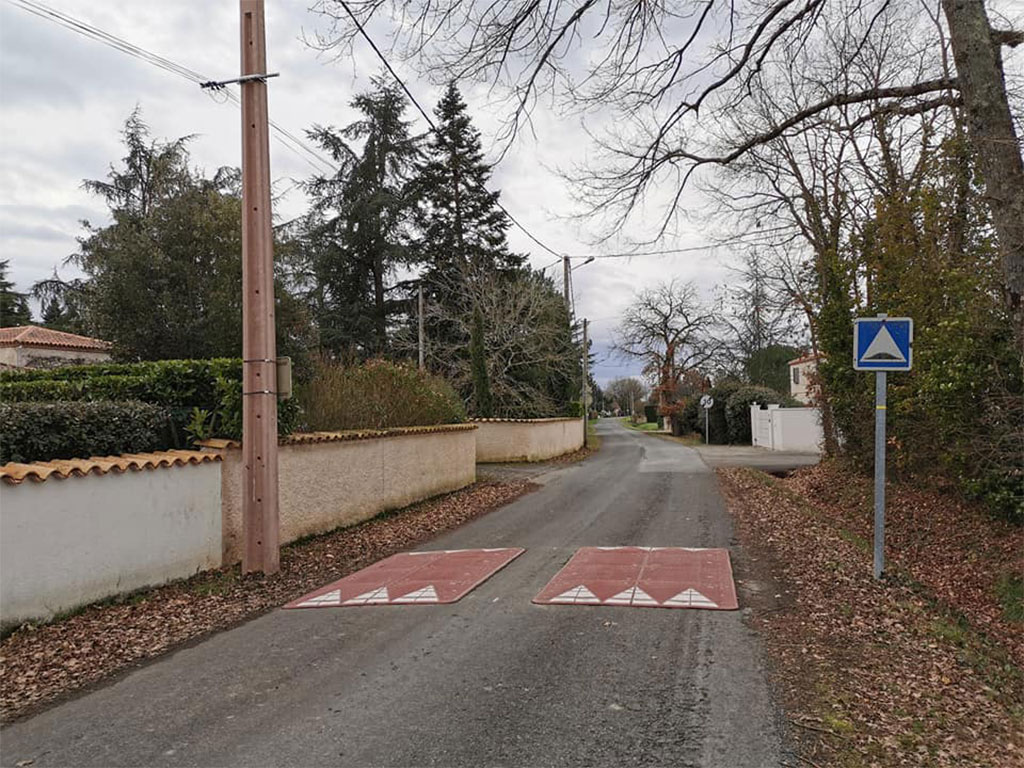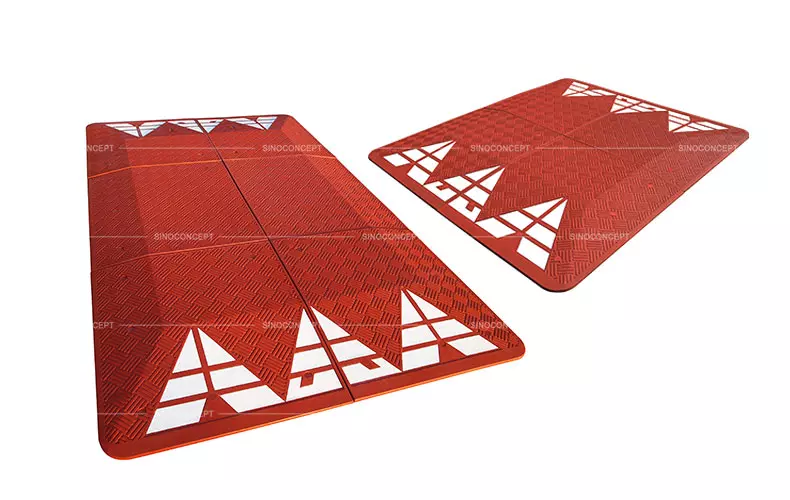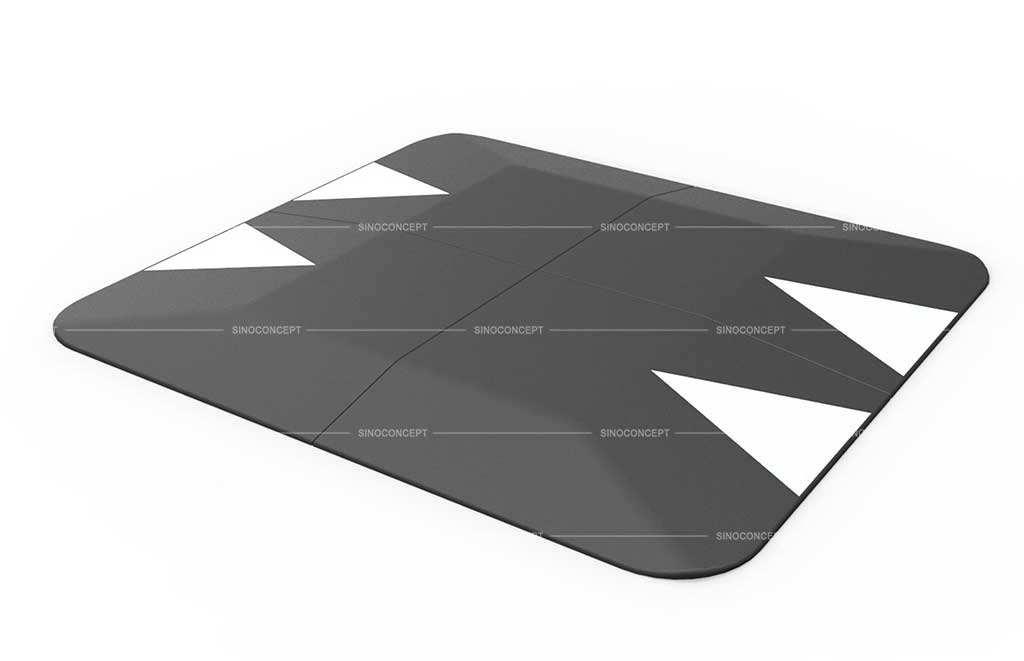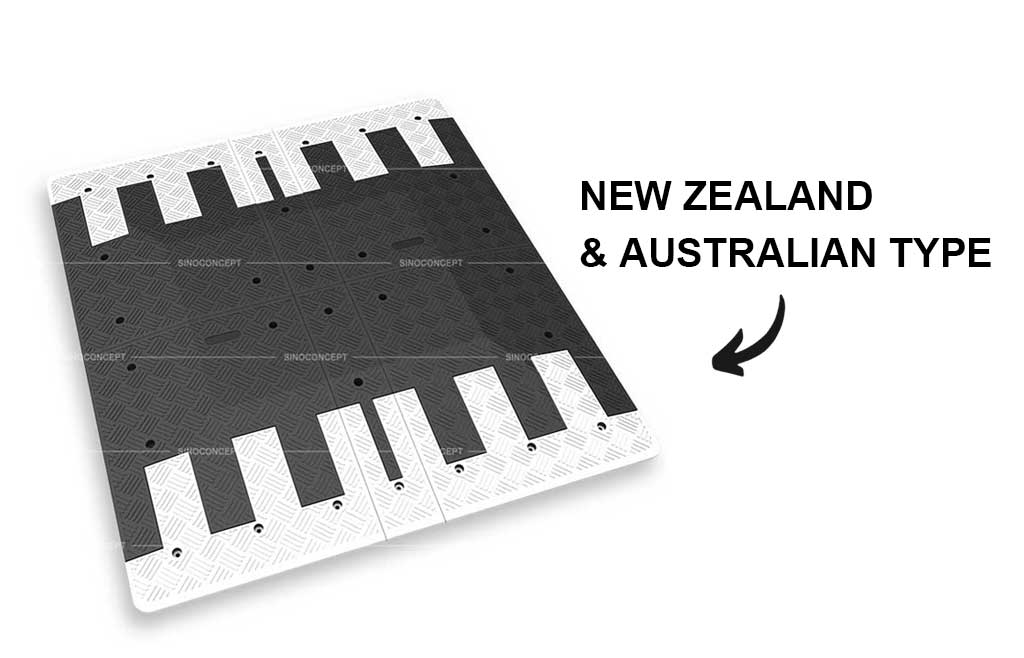Check speed cushions in different countries
The speed cushion is one of the most useful traffic calming devices used. It can be implemented on a roadway that acts as an ambulance route. Other emergency vehicles, such as fire trucks, conform well.
Besides its usefulness for emergency-response teams, it also favours heavy oncoming traffic. It can effectively reduce the number of collisions or the severity of crashes on roadways.
This means that it is widely used on European carriageways. Speed cushions are used by many of Europe’s municipalities to discourage speeding and enforce pedestrian safety. They slow traffic speed to improve the livability of residential areas.
European private property owners also implement them on their home’s driveways. They’re also less hazardous than other speed bumps on the road.

All you need to know about speed cushions in Europe!
Speed cushions are commonplace in European municipalities. A fact about speed cushions is that they’re more effective on European roads. This is because of the manufacturing standards that European cars conform to.
They are produced narrower than their North American counterparts. This results from the narrower European streetscape and is designed for a lower traffic volume.
This is also related to ambulances, as the European ambulance is less wide. So it can pass through the middle of two-speed cushions on a roadway.
They don’t need to straddle the speed breaker because there’s no obstruction for them on the carriageways. One can often find speed cushions in residential areas and in a slow zone like a school zone or work zone.
This is because they’re implemented to improve safety by reducing crashes and their severity. Allowing the emergency-response teams to carry out their work without becoming an impediment decreases the number of fatalities.
Hence, speed cushions are part of every traffic control plan that a vehicle like an ambulance often passes through.
Another advantage of these undulations in a European municipality is that cyclists or bicyclists can easily cut through them. They also cause less wear and tear on the city traffic that passes on top of them on the carriageway they’re built upon.
This is because of their surface, which has more of a flat top than a regular bump in the road.
The speed cushions in Europe are used to slow traffic to 20 to 30 mph speeds. Raised section calming techniques have led to decrements of up to 70pc on some European carriageways.
To manufacture a speed cushion for Europe, it must obey European standards. It should also obey the standards of the countries they are sold in if there are any differences.

You have already read a good part of this article, 👀
We've
got the impression that you like it. 🙂
👇🏻
IF YOU ARE LOOKING TO WORK DIRECTLY WITH A MANUFACTURER,
FEEL FREE TO CONTACT US. WE ARE VERY HAPPY TO HELP!
Facts about speed cushions in the US
As mentioned above, speed cushions may be used as traffic control devices in Europe. But they’re tougher to find in the US’s traffic safety programs for speed control. This is attributed to the track width of American cars being wider than their European counterparts.
Regardless, the following are some of the most important facts about American speed cushions:
- Most American speed cushions are designed for cars travelling between 15 to 20 miles per hour.
- Speed cushions in America usually reduce the traffic volume by 20 per cent.
- In America, the laws regarding speed cushion spacing differ in some states.
- The MUTCD recommends that signage should warn drivers about speed cushions beforehand.
- Permissions are to be taken from emergency response teams to build speed cushions on their routes.
- Speed cushions in the United States are also known as speed slots or speed pillows.
- A speed cushion should be at least 150ft from an uncontrolled intersection and 250ft from a signalized one.
- The highest speed limits on American roadways with speed cushions shouldn’t exceed 30mph.
- American speed cushions should be designed with tapers on the side for drainage.
- Speed cushions aren’t recommended to be used before pedestrian crossings in America.
Undoubtedly, traffic engineers in the US are still researching speed cushions. The researchers have been encouraged by the 85th percentile data available.
The other factor that supports the idea is the reduction in speed limit violations. The traffic data also suggest that the amount of discomfort experienced by truckers and emergency vehicle drivers is lower.
The Department of Transportation has also considered its impact on cyclist safety. However, it will take more time for these speed cushions to get erected as common sources of traffic calming.
It is because the installation of speed cushions is related to the manufacturing standards of American vehicles. Unfortunately, these laws will not be subjected to any changes shortly.

Secrets about speed cushions in New Zealand and Australia!
As the number of motorists in the world increases, countries like New Zealand and Australia are also suffering from increments in traffic.
Still, road safety in the cities of these two countries has either remained stable or increased. Both of them tend to employ intelligent transport systems.
A part of these systems is the vertical deflection category. This also includes speed cushions, which are often found.
And if you want to discover more, don’t hesitate to look at the information below:
- Australians and New Zealanders have used speed cushions in series to successfully prevent hoons (a local term for reckless drivers) from street racing.
- To get speed cushions or other bumps in the road in an area, the applicant must get at least three of their neighbours to agree.
- Unlike the United Kingdom, these countries allow concrete and rubber speed bumps on public roads.
- The standard overlooking the speed cushion in Australia is the AS2890.
- New Zealand only allows speed cushions on a rapid transit network route.
Other than these, the governments of these countries also require the undulations to be reflective and visible.
In contrast, cases are recorded in these countries where unmarked bumps have seriously damaged the oncoming traffic. Their ability to incorporate speed cushions into their traffic-engineering philosophies has greatly benefited their efforts to calm traffic.

Conclusion
To conclude, the speed cushion is an important deflection used to enforce traffic rules throughout Europe and the Australian continent. However, it isn’t very popular in the United States because American vehicles can easily pass through them.
Because they’re wider, speed cushions cannot discourage them from speeding. This also compromises bicyclist safety.
This is even though the research indicates how useful speed cushions are in America. Various independent testers have shown that they can cause large reductions in traffic counts.
If these are applied to most American residential areas, they will result in better enforcement of traffic laws. Hence, the effectiveness of speed cushions has been recommended by these researchers.
In contrast, using speed cushions in the oceanic countries of Australia and New Zealand is much more common. This is because their manufacturing standards don’t hold them back.
They’ve also successfully tested these deflections, and the results have shown them to stop overspeeding. They are also given more freedom in terms of using concrete or cushions made from recycled plastic.
👇🏻
IF YOU ARE LOOKING TO WORK DIRECTLY WITH A MANUFACTURER,
FEEL FREE TO CONTACT US. WE ARE VERY HAPPY TO HELP!





















